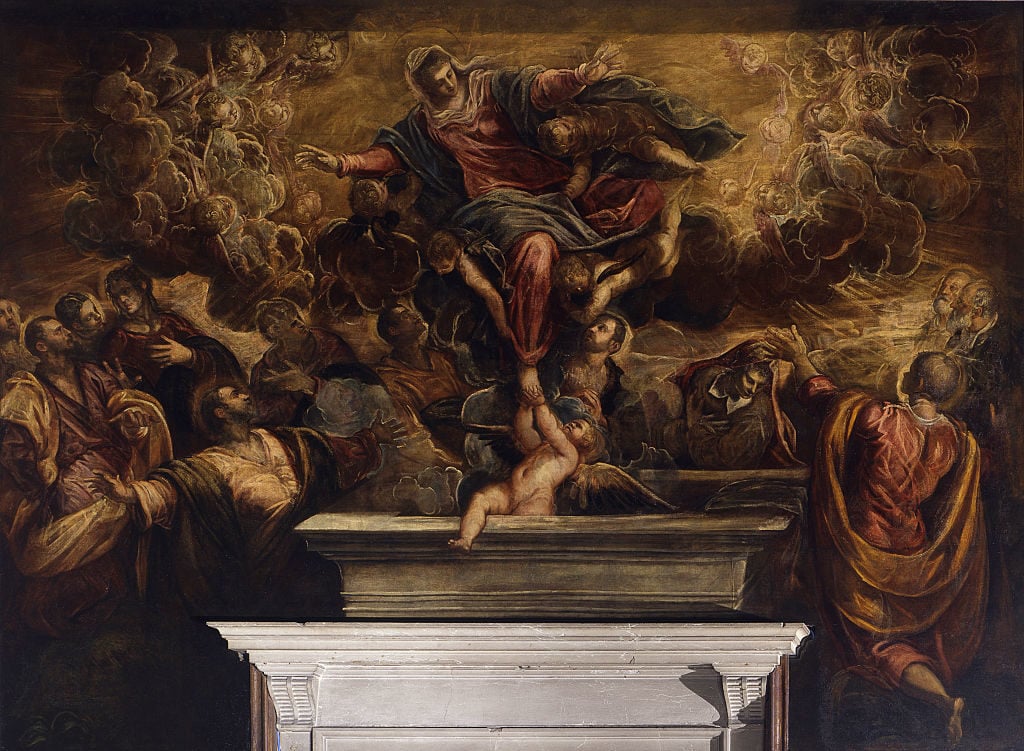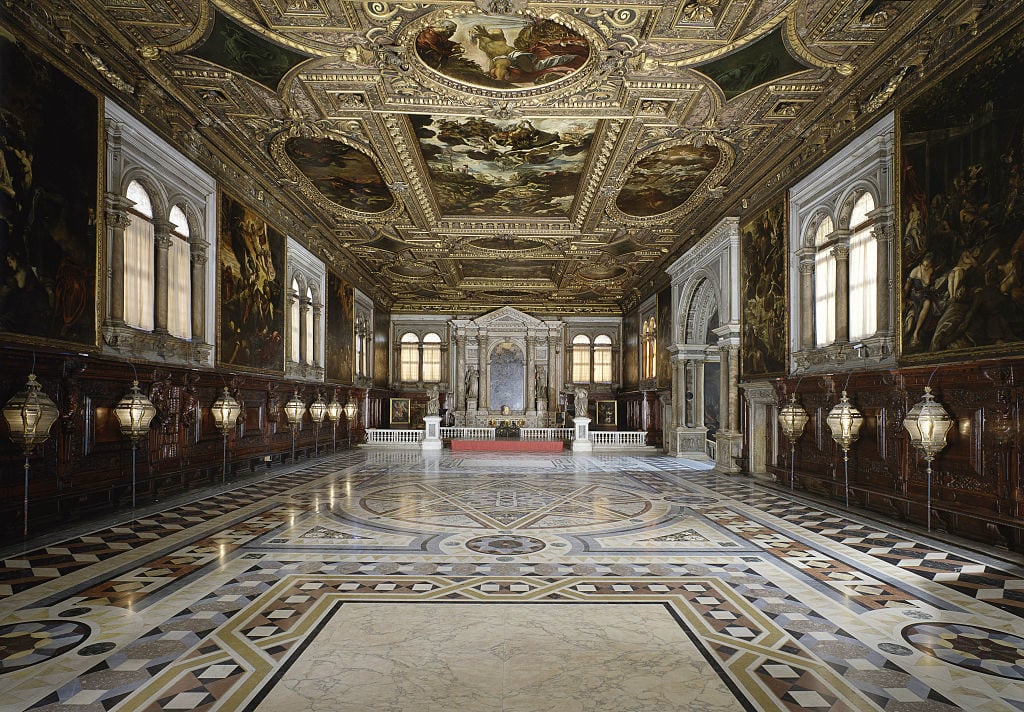People
Helena Bonham Carter Is the Voice of a New Documentary Charting the Rebellious Life of Venetian Painter Tintoretto
The release of the film coincides with the Venetian painter's 500th birthday.

The release of the film coincides with the Venetian painter's 500th birthday.

Kate Brown

Tintoretto was the ultimate Venetian. Venice practically oozes the spirit of the artist, whose giant and somewhat manic artworks cover a substantial portion of the floating city’s most opulent architecture. It is said that the Venetian-born artist left the city only once in his lifetime.
But if you can’t make it to Venice anytime soon, a new documentary offers the next best thing: a deep dive into the life and work of the artist David Bowie famously described as a “proto-rock star.” Tintoretto – A Rebel in Venice, directed by Giuseppe Domingo Romano and narrated by actor Helena Bonham Carter, made its world premiere in Italy in late February and comes to the United States on September 17.
The release of the 90-minute film coincides with worldwide celebrations and exhibitions marking the artist’s 500th birthday. (Scholars are unsure whether Tintoretto was born in 1518 or 1519, so the commemorations have straddled two years.)
Born Jacopo Robusti, the artist became nicknamed “tintoretto” (the word translates to “little dyer” and was inspired by his father’s fabric dying business). The film traces his rise and explores his skill not only as an artist, but also as a businessman. He was incredibly quick, produced in high volumes, and was known for undercutting other painters’ prices. All told, Tintoretto made an astounding 300 paintings in his life, most of which were commissioned for palazzos, churches, and other buildings in Venice.

Assumption of the Virgin (Assunzione della Vergine) by Tintoretto. Photo: Sergio Anelli/Electa/Mondadori Portfolio via Getty Images.
One of the so-called “big three” of Venice, the 16th-century artist was a rival contemporary of the two more widely known painters of the time, Titian and Paolo Veronese. But unlike those two, Tintoretto did not travel. “Tintoretto is Venice, and Venice is Tintoretto,” Bonham Carter says in the documentary’s opening moments.
This March, North America will get his first retrospective of the artist, “Tintoretto: Artist of Renaissance Venice,” at Washington, DC’s National Gallery of Art (from March 24 to July 7). The show, which includes 50 paintings and many drawings, was recently on view at Venice’s Gallerie dell’Accademia and the Palazzo Ducale in Saint Mark’s Square, which permanently hosts many of his murals.
The documentary provides a high-flying tour of the best-ofs that will never be shown outside the city. Tintoretto tended to work in cinematic proportions and his compositions were highly dramatic (French philosopher Jean-Paul Sartre dubbed him the “first cinema director in history”).
Frederick Ilchman, who co-organized the show in Washington, explains in A Rebel in Venice how Tintoretto seemed to have foreseen the concept of the freeze frame. He points to the painting Tarquin and Lucretia, in which Lucretia’s pearl necklace has just broken—the individual pearls are frozen in midair before they hit the ground.

Tarquin and Lucretia by Tintoretto.
The film paints a portrait of a bold, self-assured artist. Once, while the most famous and important Venetian art critic at the time, Pietro Aretino, was posing for a portrait, Tintoretto threatened him to stop criticizing his work. Ilchman also recalls how he painted two of the largest works of the Renaissance, each measuring 48 feet in height, at the Church of Madonna dell’Orto for free, knowing it would stand as an unforgettable advertisement for his work. One of the two, The Last Judgement, was a direct challenge to Michelangelo, according to the film.

Jacopo Robusti (aka Tintoretto)’s work at the Scuola Grande di San Rocco. Photo: Sergio Anelli/Electa/Mondadori Portfolio via Getty Images.
Tintoretto took that gig to help him secure the most prestigious commission of his lifetime: painting the Scuola Grande di San Rocco in Venice. The artist left nothing to chance: he sneakily acquired the dimensions of the oval ceiling ahead of time, and while the other painters up for the job presented preliminary sketches, Tintoretto installed his own finished work, effectively blowing away the competition.
Tintoretto’s works do crop up now and again at auction (David Bowie, in fact, owned one), and the documentary and traveling exhibitions offer more of an opportunity than usual to see his work. But to truly understand it, you will have to head to the city the artist loved most.